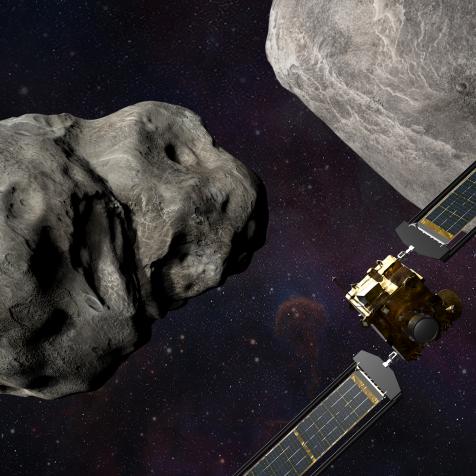
When We’ll Know if NASA’s Asteroid Impact Test was a Success

Recently NASA’s DART mission succeeded in its primary goal, which was to slam a spacecraft face-first into an asteroid. For science. The intention of the mission was to test if we could actually redirect an asteroid and send it into a different orbit. But how and when will we know if it worked?
The DART (Double-Asteroid Redirect Test) is about as simple as you can get when it comes to orbital mechanics. Find an asteroid. Slam something into it. See if we can move it. Done. The unlucky asteroid in question is Dimorphos, a small satellite of the larger asteroid Didymos. Dimorphos is relatively small when it comes to asteroids, just about 500 feet across and weighing somewhere around 5,500 tons.
The spacecraft, on the other hand, weighs about half a ton. So how could this possibly work?
It works because when it comes to space - if you give something an inch it will take a mile. The goal wasn’t to massively, instantly change the orbit of Dimorphos, but to change it just a little. Over long enough times, it’s hoped, even the tiniest change will add up to big differences.
Imagine you’re driving your car on a perfectly straight road. If you turn your steering wheel even a tiny bit, you’ll still stay on the road but after the miles add up you’ll find yourself on the side. If we hit an asteroid and give it a tiny change in velocity, it’s possible to send it into a completely different orbit.
What we do know now, is that DART slammed into Dimorphos as hard as it could. A combination of onboard cameras, a ride-along CubeSat imager, and Earth-based observatories all confirmed the impact. We won! Or did we? If the changes are going to be very small, how can we possibly tell?
The complete answer will come in a follow-up mission launched by the European Space Agency. The HERA mission will fly to the same asteroid as DART, this time without intentionally trying to hit it. HERA is expected to launch in 2024 and arrive at the Didymos-Dimorphos system about a year later. Once in orbit, it will survey the damage dealt and measure any changes to the orbital characteristic of the system.
We need to wait these few years because the orbital changes will initially be too small to measure. It will take time for the differences to build up to become something measurable, and only then will we truly know if DART was a success.
For now, NASA will be releasing information on the immediate results of the impact this Tuesday.


















